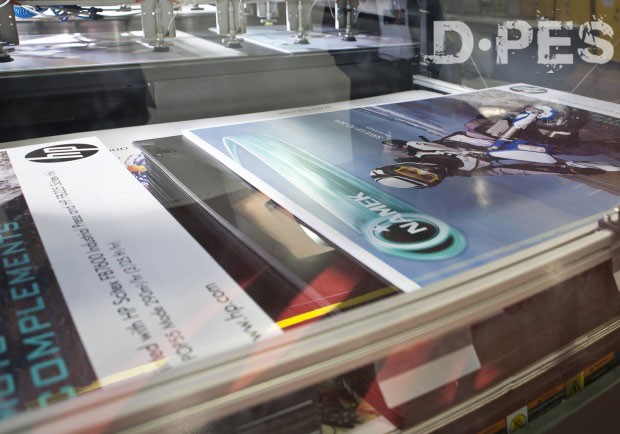Back in Israel, part of my itinerary this week is to pay a return visit to the home of Scitex and its manufacturing plant. When one considers how difficult it often is to see what exactly goes on under the bonnet at the production plant for many wide-format machines, it makes a refreshing change to be able to get up close and personal to everything, from a naked chassis, to the highly organised spaghetti of wiring and cabling, and to all the other components which go to make up solid engines.
When we see hosts of gleaming machines at trade shows and in demonstration suites, how much do we really know about their manufacture? Are the people involved in building these platforms really interested in how they evolve into working units, or are they just doing a job?

A test print on the HP Scitex FB7600
A complex printing machine which represents a sizeable investment to a PSP needs to be designed and assembled with confidence. It needs to emulate its manufacturer’s ethos of quality, and should easily be able to outlive its intended ROI. The platform must be rugged enough to cope with the everyday stresses and strains of being put to work, and often in non-stop environments where throughput must be reliable and continuous. Sadly, I know of plenty of cases where this hasn’t been the case.
Anyone planning to buy a print engine surely has the right to investigate the quality of its components and the overall manufacturing practices. Those running production sites shouldn’t be nervous about allowing potential investors to subject the machines they’re interested in to the closest scrutiny. After all, these platforms are going to provide the daily bread for many and the last thing anyone wants is a stuttering piece of equipment which doesn’t do the jobs it’s intended for, and becomes a costly white elephant that cannot be depended on to turn out results that are fit for purpose.
But, as well as the quality of the components, there are teams of people whose task it is to develop, engineer and knit together equipment. Although automation might play a part in some elements of construction, the folk who oversee and cherish the print engine they’re responsible for building need to take pride in what they’re doing. Clean and organised production areas are going to inspire far more confidence than some grubby factory in a gloomy part of the world, where staff struggle in poor lighting trying to fiddle around with sub-standard parts.
So HP Scitex’s facility is on my agenda for another visit. It’s a great example of how printing machines should be built, and strong testimony to the finished equipment that comes out of the company’s production methodology.